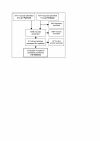Multidimensional prognostic indices for use in COPD patient care. A systematic review
- PMID: 22082049
- PMCID: PMC3228786
- DOI: 10.1186/1465-9921-12-151
Multidimensional prognostic indices for use in COPD patient care. A systematic review
Abstract
Background: A growing number of prognostic indices for chronic obstructive pulmonary disease (COPD) is developed for clinical use. Our aim is to identify, summarize and compare all published prognostic COPD indices, and to discuss their performance, usefulness and implementation in daily practice.
Methods: We performed a systematic literature search in both Pubmed and Embase up to September 2010. Selection criteria included primary publications of indices developed for stable COPD patients, that predict future outcome by a multidimensional scoring system, developed for and validated with COPD patients only. Two reviewers independently assessed the index quality using a structured screening form for systematically scoring prognostic studies.
Results: Of 7,028 articles screened, 13 studies comprising 15 indices were included. Only 1 index had been explored for its application in daily practice. We observed 21 different predictors and 7 prognostic outcomes, the latter reflecting mortality, hospitalization and exacerbation. Consistent strong predictors were FEV1 percentage predicted, age and dyspnoea. The quality of the studies underlying the indices varied between fairly poor and good. Statistical methods to assess the predictive abilities of the indices were heterogenic. They generally revealed moderate to good discrimination, when measured.
Limitations: We focused on prognostic indices for stable disease only and, inevitably, quality judgment was prone to subjectivity.
Conclusions: We identified 15 prognostic COPD indices. Although the prognostic performance of some of the indices has been validated, they all lack sufficient evidence for implementation. Whether or not the use of prognostic indices improves COPD disease management or patients' health is currently unknown; impact studies are required to establish this.
Figures
References
-
- Global Initiative for Chronic Obstructive Lung Disease (GOLD) Global Strategy for Diagnosis, Management, and Prevention of COPD (2010) http://www.goldcopd.com
-
- Anthonisen NR, Wright EC, Hodgkin JE. IPPB Trial Group. Prognosis in chronic obstructive pulmonary disease. Am Rev Respir Dis. 1986;133:14–20. - PubMed
-
- Yang IA, Fong KM, Sim EH, Black PN, Lasserson TJ. Inhaled corticosteroids for stable chronic obstructive pulmonary disease. Cochrane Database Syst Rev. 2007. p. CD002991. - PubMed
Publication types
MeSH terms
LinkOut - more resources
Full Text Sources
Medical


